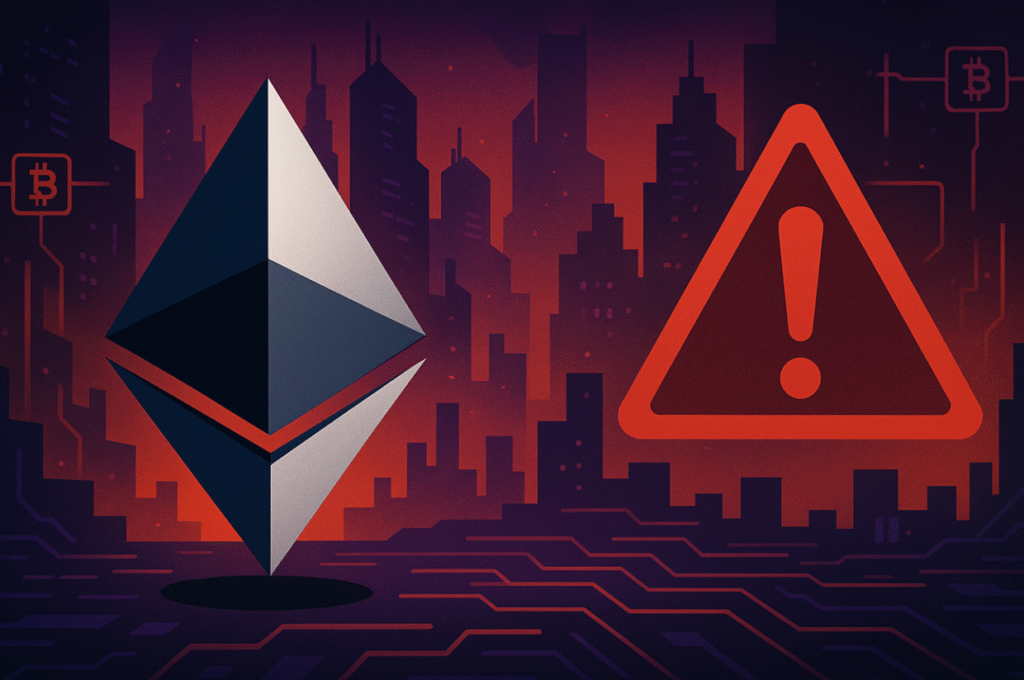In the ever-evolving landscape of cryptocurrency, understanding the intricate details that drive market changes is vital for investors and enthusiasts alike. Ethereum, one of the most prominent players in the blockchain arena, has recently been the subject of varied interpretations by industry experts. A vibrant discussion on the factors influencing the valuation of Ethereum and similar blockchain technologies can shed light on its future trajectory. In this analysis, we’ll dive into the differing perspectives of Nick Szabo and Ryan Watkins, exploring the underlying themes that shape Ethereum’s market performance and what it may mean for investors.
Understanding Ethereum’s Market Dynamics: Szabo vs. Watkins
Ethereum’s Valuation: Beyond Utility
Nick Szabo, a legendary figure in the cyberpunk and cryptocurrency space, offers a compelling critique of Ethereum’s valuation. He argues that the primary use cases of Ethereum do not significantly influence its market value. According to Szabo, while Ethereum’s applications can generate substantial revenue, this does not necessarily translate into a robust correlation between its utility and its market price. Unlike Bitcoin, whose main use case as a store of value is closely tied to its valuation, Ethereum’s utility and market value are less directly connected.
This structural issue, as Szabo sees it, suggests that Ethereum’s network utility does not automatically result in an increase in its token’s value. In contrast, Bitcoin’s design inherently links its utility to its market price. Szabo’s observations, shared after a five-year hiatus from the social media platform X, highlight a crucial point in response to Ryan Watkins’ differing perspective.
Watkins’ Critique: The Role of Narrative and Simplification
Ryan Watkins, co-founder of Syncracy Capital, presents an alternative viewpoint that challenges conventional valuation models. He contends that investors frequently overcomplicate the valuation of Layer-1 blockchains, such as Ethereum, when simple narratives and price dynamics often play a more critical role. Watkins suggests that Ethereum’s recent price surge is less about fundamental shifts and more about a change in narrative.
Why Has ETH’s Price Tripled Since April?
According to Watkins, the transformation in Ethereum’s appeal from a “dying platform” to a blockchain powerhouse for stablecoins and institutional investment opportunities has fueled its price rise. He emphasizes the influence of narratives over hard data, suggesting that in the absence of shared valuation methodologies, these narratives fill a critical void.
Narratives and Comparative Valuation
Watkins hypothesizes about Ethereum’s bullish case without declaring allegiance to any specific theory. He raises ideas such as ETH potentially becoming a global economic tax or a programmable Bitcoin that defies conventional valuation. Given the absence of definitive answers, the market leans on simple comparisons and capital flows.
“Bitcoin is worth $2 trillion. Why shouldn’t ETH be valued at 50% of that figure?” he questions, highlighting Ethereum’s broader functionality. He concedes the awkwardness of these comparisons but acknowledges their utility in guiding market participants through current conditions.
Two Perspectives, One Market Reality
Both Szabo and Watkins offer valuable insights that can coexist in the current market paradigm. While Ethereum’s valuation may be driven by narratives and relative value, Szabo’s query about the potential for Ethereum’s design to forge a stable link between network utility and token value remains unanswered. At this point, the debate underscores a market phase where perception of Ethereum’s purpose, more than cash flows or fundamental models, dictates the market tone.
Is Fantom (FTM) a Good Long-Term Investment?
Fantom (FTM) has attracted attention for its scalable architecture and low transaction fees. However, like any investment, it requires careful analysis of market trends, development updates, and competitive positioning before making a decision.
How does Ethereum’s price relate to its utility?
Ethereum’s utility does not directly translate to its market price due to the network’s diverse use cases which are loosely connected to its valuation. Unlike Bitcoin, whose primary function as a store of value is closely tied to its price, Ethereum’s market dynamics are driven by complex narratives and external factors.
What defines the narratives that drive Ethereum’s market price?
The narratives shaping Ethereum’s market price often stem from its perceived role in the blockchain ecosystem. Changes in its functionality, such as becoming a stablecoin engine or attracting institutional interest, contribute significantly to how investors view its potential and subsequently, its market value.
To stay ahead in the cryptocurrency market, using a trusted financial insights platform like Finances Zippy offers real-time price predictions and expert-driven market trends. This comprehensive guide to Fantom explores its core technology, investment potential, and market positioning. The FAQs provide deeper insights to help readers make informed decisions.

